Introduction
Selecting the right natural deodorant plays a crucial role in ensuring daily comfort. Individuals prone to itching, rashes, or irritation from conventional formulas often seek gentler natural deodorant alternatives that effectively control odor without triggering skin sensitivities. Many people with delicate underarm skin report redness and dryness, indicating that their current product may not be suitable for their needs. This is why dermatologists and product specialists often recommend switching to natural deodorants.
High-quality formulations prioritize gentle ingredients, such as plant-based moisturizers and naturally derived odor absorbers, to reduce the risk of contact dermatitis and other adverse reactions.
Maintaining underarm health requires an understanding of how different ingredients interact with the skin’s natural barrier. By opting for mild, non-irritating components and following proper application techniques, individuals can achieve long-lasting freshness without compromising skin comfort. For those looking to minimize exposure to harsh chemicals and prevent irritation, natural deodorants provide an effective and skin-friendly solution. The following sections explore essential considerations for selecting the best product, practical tips for enhancing results, and recommended formulations that balance gentleness with reliable odor protection.
Understanding Sensitive Skin
Sensitive skin is characterized by an increased tendency to react to specific ingredients, temperature changes, or environmental stressors. Because the underarm area tends to be warm and moist, it is especially prone to irritation when exposed to chemicals that might disrupt the delicate pH balance. As a result, individuals may observe redness, burning sensations, or even peeling skin if a product is unsuitable.
Factors Influencing Sensitivity:
- Skin Barrier Function:
The outermost layer of the skin is designed to protect the body from external irritants. A compromised barrier can lead to heightened reactivity, making certain deodorant ingredients problematic. - Genetics:
Some people inherit more reactive skin, which makes them prone to experiencing negative responses to common additives in hygiene products. - Environmental Elements:
Hot climates, humidity, and sweating can amplify sensitivity by loosening the skin barrier and allowing irritants to penetrate more easily. - Pre-existing Conditions:
Those with eczema, dermatitis, or psoriasis are more likely to encounter challenges when using products containing harsh chemicals or fragrances.
Selecting a natural deodorant is a proactive measure in addressing these potential triggers. Individuals with sensitive skin can minimize flare-ups and maintain comfortable underarms by focusing on formulas that steer clear of aggressive elements.
Key Irritants in Conventional Deodorants

Conventional deodorants and antiperspirants often rely on specific chemicals to curb odor and dampness. While these ingredients are frequently effective in controlling sweat, they sometimes spark unwanted side effects for sensitive users.
Common Irritants:
- Aluminum Compounds:
Aluminum salts are typically found in antiperspirants because they block sweat ducts. However, these salts may exacerbate itching or redness for those prone to sensitivity. - Synthetic Fragrances:
Artificial scents can mask odor effectively, yet they often contain a mixture of chemicals that irritate reactive skin. - Parabens:
Parabens function as preservatives in numerous personal care goods, but they have been associated with concerns regarding skin irritation and endocrine disruption. - Triclosan:
This antibacterial agent can lead to dryness and peeling, particularly when used repeatedly on vulnerable or thin skin.
Shifting to a natural deodorants reduces exposure to these components, providing a gentler approach that aims to sustain underarm health and comfort. Research shows that products free from parabens and artificial fragrances are less likely to provoke inflammation and itching, making them valuable for individuals who need to safeguard delicate skin.
Why Natural Deodorants Is Effective

A growing number of people are turning to gentle deodorant alternatives that steer clear of harsh ingredients. While chemical-heavy formulas might be effective at stifling sweat, they do not always address the deeper issue of skin well-being. Here is why opting for natural deodorants can be beneficial:
- Reduced Chemical Load
Overloading the underarm area with synthetic substances may lead to irritation and long-term dryness. Formulas that rely on elements like coconut oil, shea butter, and plant-based extracts often prove less troublesome. By decreasing harsh additives, the risk of adverse reactions diminishes. - Skin-Supportive Ingredients
Many natural products incorporate soothing agents known for their moisturizing or anti-inflammatory effects. Examples include chamomile, aloe vera, and calendula. These ingredients help nourish the skin, preserving its balance and elasticity. - Gentle Odor Neutralization
Natural deodorants often uses ingredients such as baking soda, magnesium hydroxide, and zinc oxide to counteract odor instead of masking it with strong fragrances. These mild odor absorbers can be just as potent as their synthetic counterparts when used consistently. - Avoiding Barrier Disruption
Harsh chemicals may strip or disrupt the skin’s protective barrier, which can lead to redness or dryness. Products formulated for sensitive skin focus on maintaining the skin’s natural defenses, minimizing the likelihood of irritation. - Less Long-Term Sensitization
Prolonged use of harsh deodorants can increase sensitivity over time. In contrast, consistent use of natural deodorants for sensitive skin can help stabilize skin reactivity and prevent further aggravation. - Dermatologist-Endorsed Options
Many manufacturers of sensitive skin deodorants undergo third-party testing, ensuring their formulations meet dermatologist guidelines and align with rigorous product standards. - Cleaner Labeling
Ingredient lists for natural deodorants frequently undergo stricter scrutiny, providing clearer knowledge of what is applied to the skin. This transparency can enhance user confidence and promote a more consistent daily routine. - Balance Between Odor Control and Comfort
A gentle deodorant needs to effectively target odor without jeopardizing skin health. Modern formulations harness mild antimicrobial agents like tea tree oil or lavender essential oil, which can help inhibit odor-causing bacteria while remaining kind to the skin. - Consumer Demand and Innovation
Rising interest in holistic well-being has spurred innovation in the deodorant industry, resulting in a variety of high-quality options intended to meet the specific needs of sensitive skin. Increased competition means users can explore multiple choices before settling on the most compatible product. - Enhanced Confidence
Consistent comfort throughout the day is key to confidence. Natural deodorants provides the needed protection against unpleasant smells, ensuring that the pursuit of gentle care does not compromise daily assurance in professional or social settings.
When considering a transition to natural deodorants, it is essential to allow the body time to adjust. Sweating patterns might shift, and it may take a short period to achieve optimal odor management. Maintaining realistic expectations and applying a product daily can help in recognizing the gradual improvements in underarm comfort and odor control.
Best Practices for Application
Employing beneficial practices can significantly enhance the experience and effectiveness of the natural deodorants. Proper application lowers the chance of irritation and helps ensure that the product delivers consistent odor protection throughout the day.
Basic Steps:
- Start with Clean, Dry Skin:
Applying deodorant right after a shower allows for even coverage on skin that has been thoroughly cleansed. If needed, gently pat the underarms to ensure they are fully dry before product application. - Use a Moderate Amount:
A thin, uniform layer is generally enough for good odor control. Overapplication can leave residue on clothing and potentially contribute to irritation. - Allow Product Absorption:
Waiting a few seconds or minutes after application helps the deodorant settle into the skin, reducing the likelihood of product transfer onto clothes. - Spot Test:
When trying a new brand, consider a patch test on a small portion of skin. Monitoring for adverse reactions over 24 hours can help identify any potential irritants before extensive use. - Store Appropriately:
High temperatures can cause natural deodorants to soften or melt, so keep products in a cool, dry place to maintain their consistency and efficacy. - Reapply When Necessary:
On particularly hot or active days, a second application might be beneficial. However, avoid constant reapplication, which could lead to friction and heightened sensitivity.
Following these guidelines can maintain underarm comfort and encourage consistent results with natural deodorants. An organized approach to product usage supports overall skin balance and avoids unnecessary disruption.
Comparison of Deodorant Formulations
Various deodorant forms exist to cater to personal preference. From roll-ons to sprays, each type presents advantages and potential downsides. The table below summarizes key elements of different deodorant forms, emphasizing the suitability for individuals seeking natural deodorants for sensitive skin.
| Form | Application Method | Pros | Potential Concerns |
|---|---|---|---|
| Stick | Swiped onto underarms | Even application, generally convenient to carry | May leave residue if overused |
| Roll-On | Rollerball dispenses product onto skin | Lightweight, precise application | Longer drying time |
| Spray | Aerosol or pump dispersed onto skin | Quick drying, minimal contact with product surface | Potential inhalation of spray |
| Cream | Applied with fingers or spatula | Enhanced moisture, can layer it gently | Requires hand contact |
| Gel | Squeezed through small openings | Cools upon application, often transparent | Can feel sticky initially |
Each formulation caters to different lifestyles, levels of activity, and personal comfort. Testing a couple of forms can help identify which best fits an individual’s specific needs. Regardless of format, it is essential to focus on products labeled as natural deodorants for sensitive skin, ensuring that the formula remains mild and supportive.
Best 7 Natural Deodorants
Many brands have produced innovative solutions that can satisfy the needs of those who require a kinder deodorant. Below is a list of popular and potentially high-profit items often featured in affiliate programs. These products often include packaging or subscription models that can generate recurring revenue, but the primary emphasis remains on the skincare benefits and gentle approach.
Recommended Products:
Schmidt’s Natural Deodorant for Sensitive Skin
This deodorant is free from baking soda and utilizes natural ingredients like magnesium and essential oils to neutralize odor effectively without causing irritation.
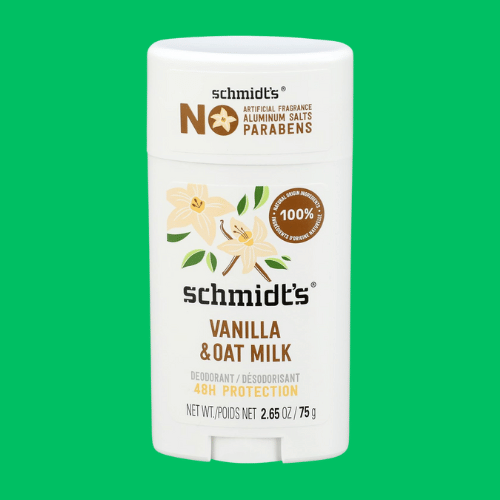
Native Deodorant
Formulated without aluminum, parabens, or sulfates, Native offers a sensitive skin line that includes soothing ingredients like coconut oil and shea butter.
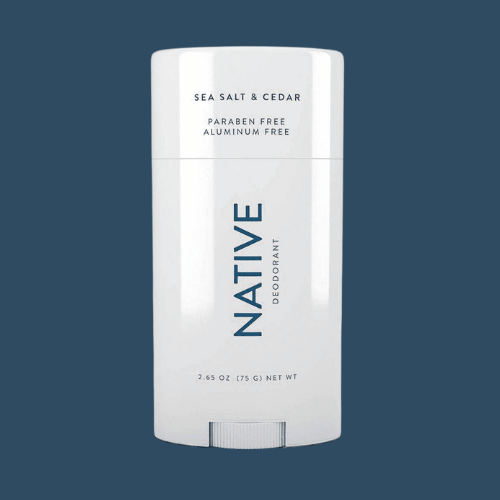
Tom’s of Maine Long-Lasting Natural Deodorant
This product uses naturally sourced ingredients and is free from artificial fragrances and preservatives, making it gentle on sensitive skin.
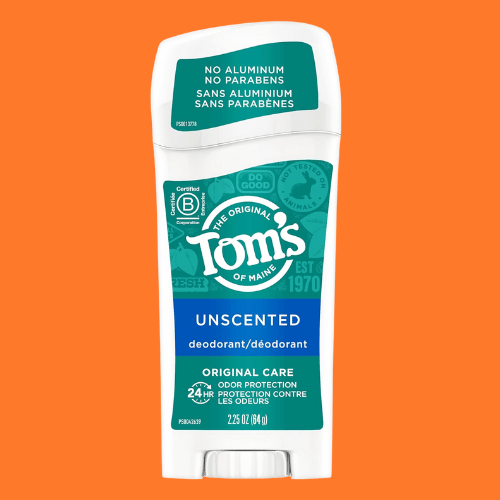
CRYSTAL Mineral Deodorant Stick
Made from natural mineral salts, this deodorant is hypoallergenic and free from aluminum chlorohydrate, providing odor protection without irritation.
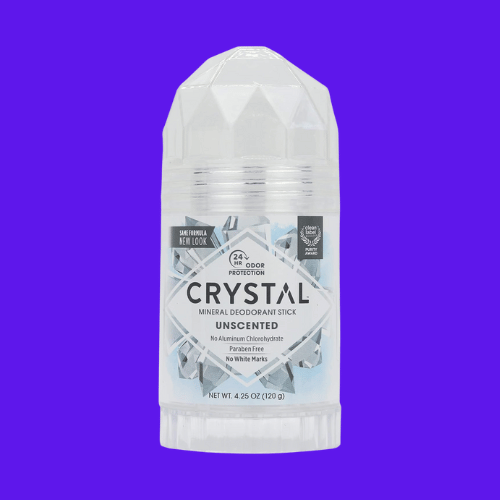
Lavanila The Healthy Deodorant
Combining botanical ingredients with a pleasant scent, this deodorant is free from harsh chemicals and suitable for sensitive skin.
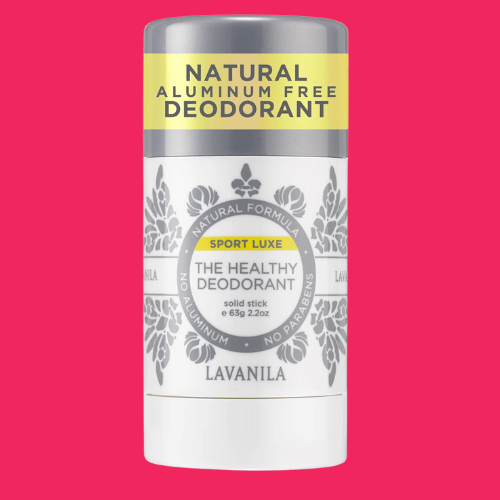
Every one of these options is marketed toward the needs of individuals who prefer a natural deodorant. By adhering to recognized testing protocols and removing harsh elements, these products strive to supply consistent odor prevention while prioritizing comfort.
Additional Tips and Benefits
In addition to using natural deodorant for sensitive skin, there are supplementary practices and insights that can further boost both skin comfort and overall well-being:
Personal Hygiene and Lifestyle Adjustments:
- Wear Breathable Fabrics:
Choosing cotton or moisture-wicking garments reduces excessive dampness in the underarm area, minimizing the conditions that promote bacterial growth. - Maintain a Balanced Diet:
Certain food choices, like spicy meals or high-caffeine beverages, can trigger heavy perspiration. Opting for a balanced diet helps curb excessive sweating. - Hydration:
Sufficient water intake supports the body’s temperature regulation, potentially reducing sweat production. - Stress Management:
Elevated stress levels can stimulate perspiration. Incorporating relaxation techniques such as deep breathing or brief breaks throughout the day may stabilize emotional and physical states.
Benefits of Consistent Use:
- Reduced Redness:
The gentle nature of these products often results in fewer instances of inflamed underarm skin. - Long-Term Skin Health:
A consistent routine that relies on natural deodorants can promote healthier underarms over time, bolstering the skin’s protective layer. - Enhanced Comfort in Varying Climates:
By preventing friction and minimizing itchiness, gentle deodorant solutions enhance daily comfort regardless of weather conditions. - Confidence Boost:
Adequate odor protection and comfortable skin contribute to an overall sense of self-assurance in professional and social environments.
Conclusion
Attaining a balance between odor control and gentle treatment is entirely feasible with today’s range of mild, innovative formulations. Opting for natural deodorant allows individuals to address their underarm concerns with a level of certainty that they are not exposing themselves to substances that may harm or irritate their skin. Taking the time to research product ingredients and consider the format that suits personal preferences—whether spray, roll-on, stick, cream, or gel—can ensure that each person finds the most suitable match for everyday use.
Now is the moment to review your current routine and experiment with options that promote healthier, happier underarms. Consider evaluating product labels for botanical extracts, essential oil blends, and other naturally derived components formulated to support delicate skin. By choosing an effective, gentle deodorant and following best practices for application, everyone can maintain fresh underarms, protect the skin’s barrier, and face each day with confidence.




